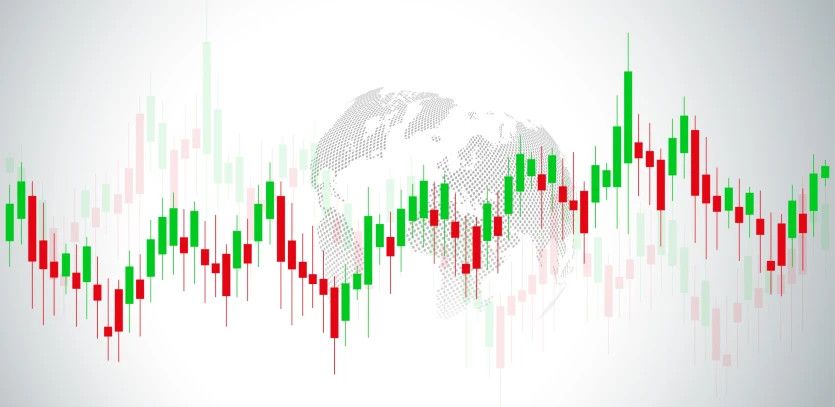Position sizing is objective decision making about how large a new position should be. Determining position sizes is largely individual, but Forex has created a couple of globally used methodologies in the past (e.g. profit/loss ratio, % based on the capital size of your capital, relating to the predicted level of risk of a trade and many more) for determining position sizes, which are still used today by professional traders from all over the world.
The so-called gradual sizing has recently been a popular sizing technique among forex traders. This technique changes the size of the position based on the predicted profitability.
It simply means that as circumstances change (because important information comes out, new analyses are performed, etc.), traders decide whether to increase, decrease, or keep the size of their open positions.
Before we get into a couple of different sizing options, we have to realize that not all sizing techniques are available for all traders. Unfortunately, it all depends on your capital base – the higher the capital, the more sizing options available (if you have a 100 USD on your account, you’ll have a hard time sizing trades the size of ten lots).
Traditional trade sizing
One of the easiest and most popular sizing techniques among traders is traditional sizing, which depends only on the size of a trader’s capital. In this type of sizing, the risk of loss is the same for each open position (the risk of loss is chosen by each trader individually and according to that, the trader then chooses the profit loss ratio for each position).
Explanation:
Traders incorporate in their trading strategy how many percent of their capital per open position they are willing to lose and then they set (usually based on analyses) the probability of loss for any open position (e.g. 60%). Then they choose the risk loss ratio, which then defines where to place the stop-loss and take-profit orders.
Example:
To make the counting easy, let’s say the initial capital is 100 USD. The trader decides he is willing to lose 5% (5 USD) of his capital per open trade. After previous analyses, he also decided that the risk of loss per open position is 60%, and that is why the ration between take-profit and stop-loss has to be higher than 6:4 (profit:loss) and after performing simple division, that makes 1,5:1.
Now we know the necessary values and the trader knows how to choose a position size and that he has to place a stop-loss order where the maximum loss is 5 USD (the accepted loss of capital). The take-profit order is placed last, according to what the ration between profit and loss the trader set up, but this ratio can’t be lower than 1,5:1, because that would foreshadow the trader suffering losses long term.
Sizing using the estimated probability of the risk of loss
This type of sizing is noticeably more complicated compared to the traditional sizing technique, and that is why it requires sufficient trading experience. Unlike in traditional sizing, the trader doesn’t choose the same risk of loss for every open position – it differs.
That is why it is necessary to create your own “individual” table, based on which you will, depending on the determined risk, set the position size and the ration between profit and loss (take-profit/stop-loss).
Probability of risk of loss
Size of open position
Profit / loss ratio
Highest loss in percent
10-30%
3 lots
2:1
5%
31-60%
2 lots
3:1
4%
61-100%
1 lot
4:1
3%
The table above was created only to serve as an example. Every trader should adjust the data in the table according to his own needs.
Explanation:
Every sizing technique requires the trader to set the highest acceptable loss per position in percent, which serves to protect the trader’s capital. Additionally, every trader creates his own analyses for each individual position based on which he then determines the expected probability of loss for each open position.
Based on the probability of loss, he then (using his own table) decides on the size of the position that is being opened, the ration between profit and loss, and the percentage of his capital that he is willing to risk for that position.
There is no recipe for what values should ideally be in the table, but the rule is usually that the higher the risk of loss, the less the trader should be willing to risk (or he should not enter the trade at all).
That is why a lot of times when the risk gets higher, the position is sized down, the profit/loss ratio is increased, or the highest acceptable loss per position is decreased.
Example:
The trading capital is 100 USD. Based on analyses, the trader comes to the conclusion that the probability of the risk of loss is 35%. That means he is willing to risk 4% of his trading account at most (4 USD -> maximum stop-loss order). The trader has also determined in his table that the position size for this risk of loss is 2 lots and that the ratio between profit and loss is 3:1.
Unlike traditional sizing, the trader should stick with the ratio between profit and loss (determined in the table) and not change it over time. Based on the profit/loss ratio, the trader calculates the take-profit order.
There are countless sizing techniques. We’ve mentioned two that are broadly used in the professional trading circle. Without sizing, trading is just gambling and a way to lose money.
We are currently working on another article on this topic where we will introduce more ways of sizing.
You can try various sizing techniques without risk and for free on the Purple Trading demo account, which you can set up on our website: https://www.purple-trading.com
About the Author
Team Purple Trading
Purple Trading is a true and 100% fair ECN / STP forex broker providing direct access to the real market. High speed orders execution, no trade-offs, no limits for any type of trading, the most advanced trading technologies. Explore more about Purple Trading at www.purple-trading.com .
For more information on the risks of trading, click here .
P.M. Purple Trading is a trade name owned and operated by L.F. Investment Limited., 11, Louki Akrita, CY-4044 Limassol, Cyprus, a licensed Cyprus Investment Firm regulated by the CySEC lic. no. 271/15.





